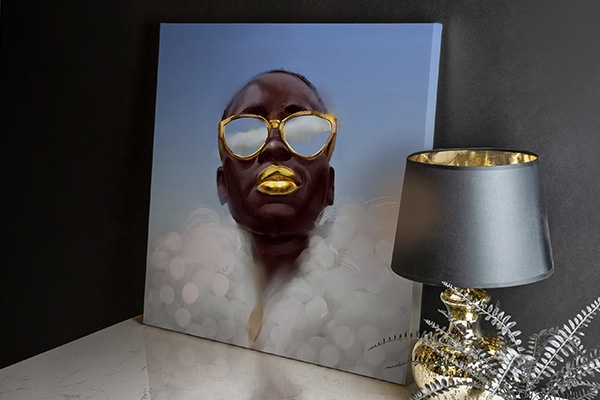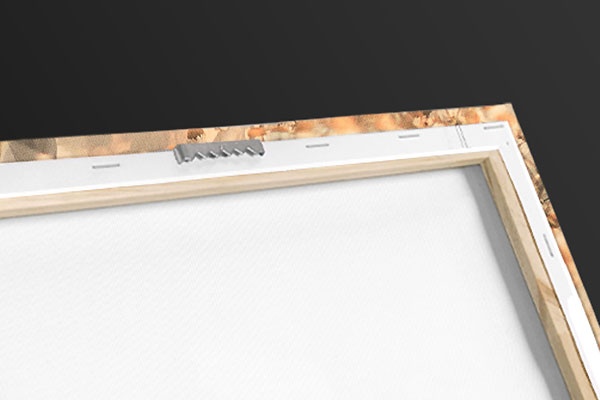Mada Primavesi By Gustav Klimt Wall Art
17″ × 24″ Stretched Canvas Print
About the Artwork
Mada Primavesi By Gustav Klimt - Item # 2128059
1912, oil on canvas, 59 x 43 1/2 in (149.9 x 110.5 cm), Metropolitan Museum of Art, New York.
About the Artist
Gustav Klimt
Gustave Klimt (1862-1918) is widely regarded as one of the most talented artists of the 20th century. Born in Austria and one of the founders of the Vienna Secession, his unique and beguiling style spans from Byzantium art to Expressionist-inspired portraits.
Klimt is best known for The Kiss (1907). It's a profoundly symbolic and highly sensual piece. Klimt augmented the oil canvas painting of converging lovers with metals, including platinum, silver, and gold leaf. The effect is an extraordinary piece that is impossible to forget.
Gustav Klimt in Context
To fully understand the timeless work of Gustav Klimt, we need to place him within his context. The Vienna of the late 19th century was a conservative and uptight place. Victorian-era social and moral attitudes, such as modesty, family values, and sexual oppression abounded.
Klimt initially worked within this framework. However, his work was deeply symbolic and often explored erotic themes and the female body. His choice of theme and subject matter can be viewed as a rejection of the Viennese social mores of his time.
While classical and naturalistic styles were popular in this period, Klimt went in the other direction. He sought to express dreams and sensuality, though his rebellion caused much consternation at the time. Indeed, his last public commission — the paintings Philosophy, Medicine and Jurisprudence — were savaged for their perceived lewdness.
Characteristics of Gustav Klimt wall décor
Seen through a modern-day prism, the work of Klimt does not appear overly sexual or crude. As he matured, he turned his gaze towards landscapes and, on occasion, society women draped in fur and adorned with gold leaf. For many, this era represents the peak years of his output.
However, despite shifts in style, some constants remain. In particular, spirals, swirls, gold embellishments, and thinly disguised psychosexual imagery are all hallmarks of Klimt's inimitable style.
What spaces suit Gustav Klimt wall art?
While Klimt's approach was very forward-looking, his art is rooted in a particular time and space. Gustav Klimt wall décor can work in a variety of rooms. The style, especially his portraits, retain enough connection to early 20th-century realism that they work in almost any environment. However, his more Byzantium or Orientalist-inspired pieces can fight for space within the most opulent rooms.
Explore our collection of Gustav Klimt wall décor when you need something eye-catching and hedonistic with a refined edge.
Product Specifications
- Expertly Handcrafted
- 1.25" Solid Wood Stretcher Bars
- Artist-Grade Canvas
- Fade-Resistant Archival Inks
- Hanging Hardware Pre-Installed
- Width: 17″
- Height: 24″
Item # 2128059
Product Features
Elevate any room with our handcrafted stretched canvas gallery wraps. Printed with archival inks and wrapped around a 1.25” inch solid wood stretcher bar, our giclée big canvas art prints are a timeless option for any decor style or space.

Our giclée canvas art prints are produced with high quality, UV-resistant, environmentally-friendly, latex inks and artist grade, polycotton canvas. We pride ourselves on color accuracy and image clarity to ensure your new canvas wall art lasts for years to come.

Assembled in the USA, each of our 1.25” inch gallery wrapped canvas art prints is stretched and stapled by our highly skilled craftspeople. Each canvas print is carefully handcrafted to ensure taut canvas wraps and clean corners for outstanding quality and durability.

Our handcrafted stretched canvas prints include sawtooth hangers for an easy and secure installation.
Product Reviews
Related Categories
ArtTransitionalClassic ArtClassic Art by PeriodModern ArtArt NouveauClassic Art by SubjectPortraitsGustav KlimtPaintingPeoplePortraitsPurple Wall ArtStaff PicksStaff Picks - KathrynFrequent Questions
Recently Viewed
Clear Recently Viewed?
Are you sure you would like to clear your recently viewed items?
Pricing policy: The full list price is a price at which we have offered the product for sale; however, we may not have sold the item at that price.





